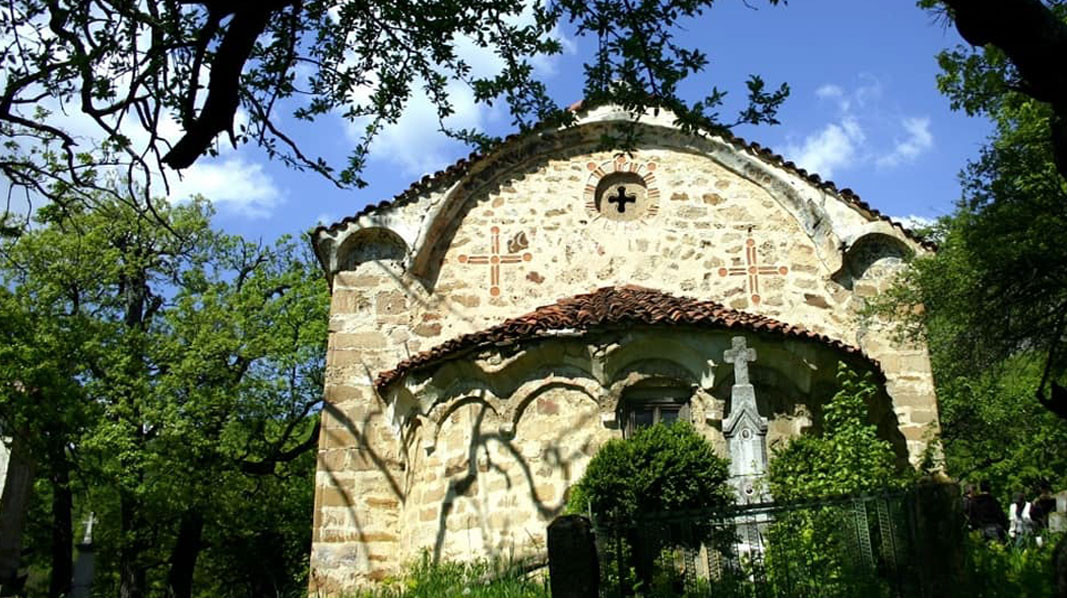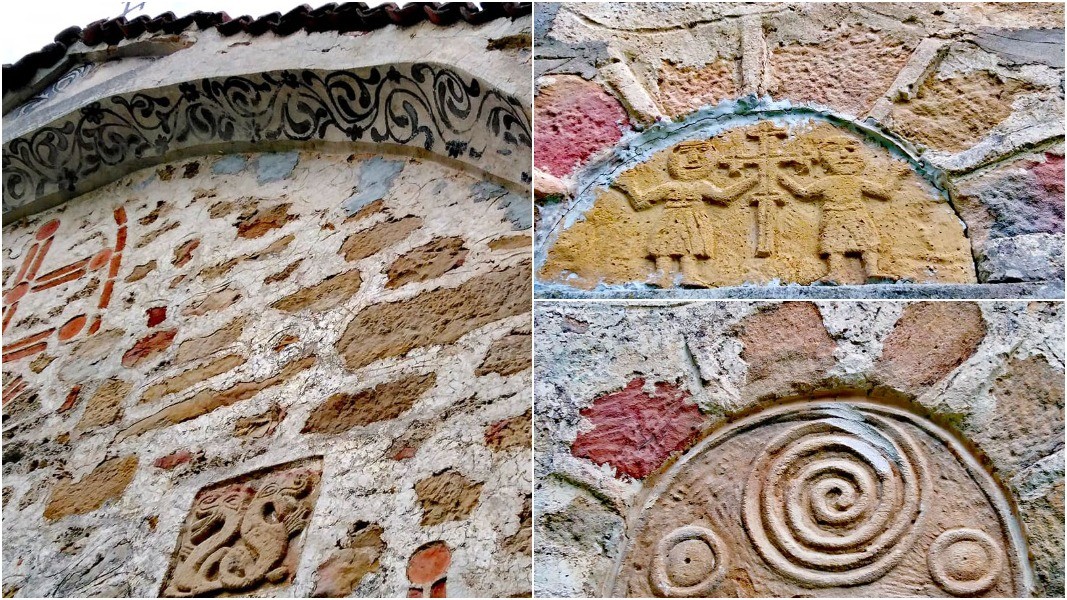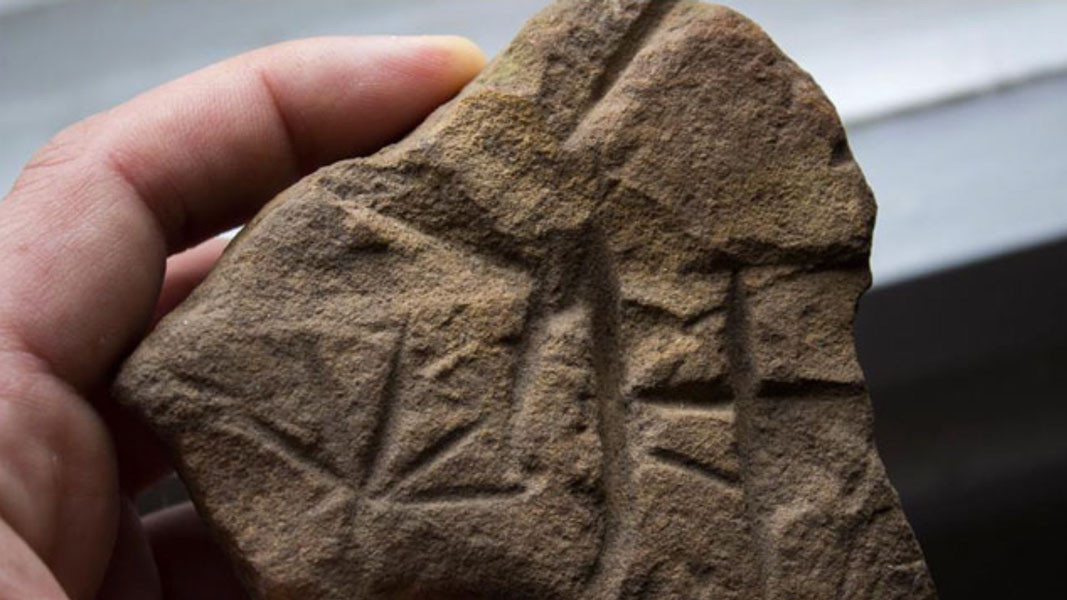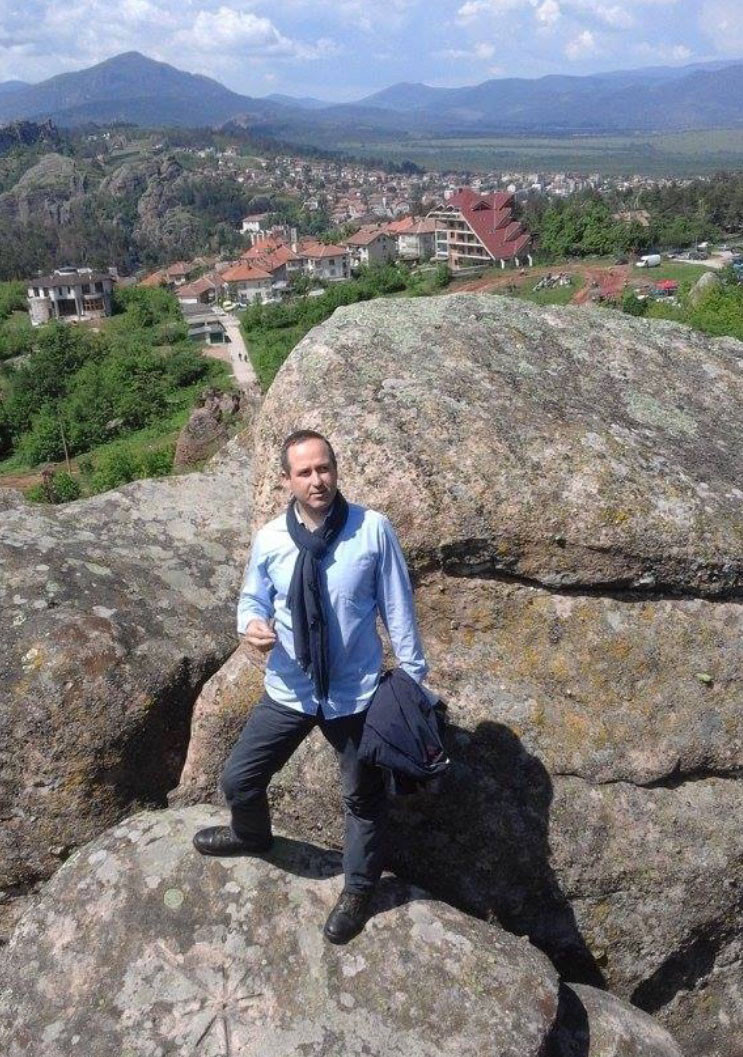Pagan symbols carved on the façade of a small village church take us to encoded knowledge from the dawn of civilization. Later, the Bogomils left their mark there. The images of people, animals, flowers and crosses still remain unsolved, but many people believe that they contain questions linked with the creation of the universe and the human pursuit of perfection.

The Church of the Holy Ascension of Jesus rises in the village of Prauzhda (Northwest Bulgaria), only a few kilometers from the town of Belogradchik and the Magura Cave. A stone plate fixed against the façade of the stone single-nave church tells us that it was built in 1855, but according to beliefs, kept by several generations of local residents, it contains parts of an older temple. These elements belonged to a monastery complex which rose 5 kilometers away from the village of Prauzhda and was built several centuries before the founding of the Vidin Kingdom in the 14th century. It consisted of three main monasteries which were encircled by thirty monastic homes. The legends have it that the founder of the Bogomil movement Veniamin (Boyan Maga) lived for some time in the nearby cave Lepenitsa.
The temple is extremely interesting, because it combines several cultures and the symbols of its façade take us back several millennia ago, Emil Tsankov, former mayor of the town of Belgogradchik told Radio Bulgaria. According to researches Prauzhda means rising sun. That is why one of the signs over the local church is the sign of the sun which can be also found in Magura Cave. Here, snakes are regarded as symbol of eternity. An interesting symbolism linked with the Sun, the Moon and five planets refers to ancient knowledge of astrology and astronomy. There is also a stone pillar on the church façade whose signs depict a prototype of a calendar.

The symbols are believed to have been transferred from a sanctuary located on one end of the village. Another ancient artefact– a stone plate with several dozens of symbols on both sides proves the rich history of this area. The ritual stele which has not been deciphered yet, was found only one hundred meters away from the church.

 This ritual stele is another challenge to science, because its symbols remind the ten thousand year-old plates from Gradeshnitsa and Karanovo which are regarded the first alphabet and are similar to the ones in Magura Cave, Emil Tsankov went on to say. Perhaps, the civilization that made it had good knowledge in various fields of science, because a map of the solar system, including parts of the planets, the Sun itself and the Goddess Mother with fire in her hands symbolizing the word, can be seen on the stele.
This ritual stele is another challenge to science, because its symbols remind the ten thousand year-old plates from Gradeshnitsa and Karanovo which are regarded the first alphabet and are similar to the ones in Magura Cave, Emil Tsankov went on to say. Perhaps, the civilization that made it had good knowledge in various fields of science, because a map of the solar system, including parts of the planets, the Sun itself and the Goddess Mother with fire in her hands symbolizing the word, can be seen on the stele.
Mysticism, legends and secrets are kept in the embrace of the harsh Balkan mountain range– Prauzhda and its suburbs can become an attractive tourist destination.
The pyramid-shaped peak Vedernik rises near the village of Prauzhda. Tourists can reach the peak via an eco-trail, Emil Tsankov adds. Part of the Belogradchik rocks and a Thracian fortress used during the Roman Empire and the Middle Ages are near Prauzhda as well. The votive crosses located in all four directions and the karst spring Vreloto are also very interesting. In general, the beauty of this region has been captivating tourists for centuries. That is why, the sultan chose Prauzhda for the personal possession when the Ottoman Turks invaded the region. Thus, no Turks ever lived in this village and the local residents had the task to guard Saint Nikola and Kadu Boaz passes. We are yet to develop routes linked with the legends of these times– for instance about King Boril who persecuted the Bogomils and Borilnitsa locality which was named after him. I believe that it will attract the interest of many people who will visit our lands.
English version: Kostadin Atanasov
Photos: Emil Tsankov and archiveThe Days of Croatian Archaeological Heritage, which will last until 8 November, begin today at the National Archaeological Institute with Museum at the Bulgarian Academy of Sciences (NAIM-BAS) in Sofia. The event is organised by the Croatian Embassy in..
Today, 6 November, marks 104 years since the annexation of the Western Outlands in 1920. Traditionally Bulgarian territories in south-eastern Serbia and northern Macedonia were ceded to the Kingdom of Serbs, Croats and Slovenes in 1920 as a result of..
Volunteers joined the efforts to clean and restore the monastery St. Spas near Bakadzhik peak. The campaign is being organized on 2 November by Stoimen Petrov, mayor of the nearby village of Chargan, the Bulgarian news agency BTA reports. The..
On November 30, the Bulgarian Orthodox Church honors the memory of St. Apostle Andrew . In Bulgaria the saint is known as Saint Andrey and the folk..

+359 2 9336 661
